By Tim Harford
BBC World Service, 50 Things That Made the Modern Economy
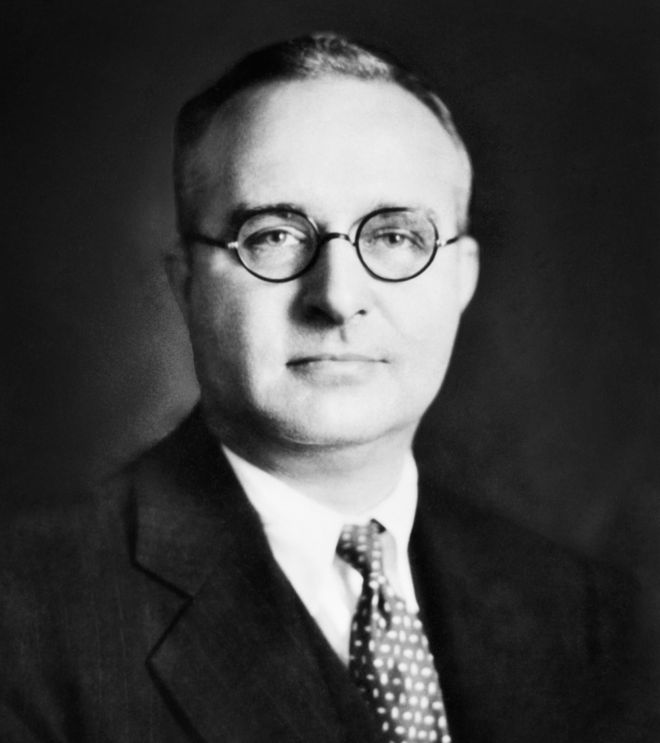
Chemist Thomas Midgley insisted that tetraethyl lead was safe
"I'm not taking any chance whatever," Midgley declared. "Nor would I... doing that every day."
Midgley was - perhaps - being a little disingenuous. He had recently spent several months in Florida, recuperating from lead poisoning.
Some of those who'd made Midgley's invention hadn't been so lucky, which is why reporters were interested.

Leaded petrol was safe. Its inventor was sure of it.
Facing
sceptical reporters at a press conference in October 1924, Thomas
Midgley dramatically produced a container of tetraethyl lead - the
additive in question - and washed his hands in it. "I'm not taking any chance whatever," Midgley declared. "Nor would I... doing that every day."
Midgley was - perhaps - being a little disingenuous. He had recently spent several months in Florida, recuperating from lead poisoning.
Some of those who'd made Midgley's invention hadn't been so lucky, which is why reporters were interested.

50 Things That Made the Modern Economy highlights the inventions, ideas and innovations which have helped create the economic world in which we live.
It is broadcast on the BBC World Service. You can find more information about the programme's sources and listen online or subscribe to the programme podcast.
On the Thursday of the week before Midgley's press conference, at a Standard Oil plant in New Jersey, a worker named Ernest Oelgert started hallucinating. By Friday, he was running around the laboratory, screaming in terror.
On Saturday, with Oelgert dangerously unhinged, his sister called the police. He was taken to hospital and forcibly restrained. By Sunday, he was dead. Within the week, so were four of his colleagues - and 35 more were in hospital.
Only 49 people worked there.
As Gerald Markowitz and David Rosner note in their book Deceit and Denial: The Deadly Politics of Industrial Pollution, the lab where it was developed was known as "the loony gas building".
Nor should it have shocked Standard Oil, General Motors or the DuPont Corporation, the three companies involved with adding tetraethyl lead to gasoline.
It is broadcast on the BBC World Service. You can find more information about the programme's sources and listen online or subscribe to the programme podcast.
On the Thursday of the week before Midgley's press conference, at a Standard Oil plant in New Jersey, a worker named Ernest Oelgert started hallucinating. By Friday, he was running around the laboratory, screaming in terror.
On Saturday, with Oelgert dangerously unhinged, his sister called the police. He was taken to hospital and forcibly restrained. By Sunday, he was dead. Within the week, so were four of his colleagues - and 35 more were in hospital.
Only 49 people worked there.
'The loony gas building'
None of this surprised workers elsewhere in Standard Oil's facility. They knew there was a problem with tetraethyl lead.As Gerald Markowitz and David Rosner note in their book Deceit and Denial: The Deadly Politics of Industrial Pollution, the lab where it was developed was known as "the loony gas building".
Nor should it have shocked Standard Oil, General Motors or the DuPont Corporation, the three companies involved with adding tetraethyl lead to gasoline.

An aerial photograph of DuPont's Deepwater factory site, where tetraethyl lead was developed
The first production line in Ohio had already been
shut down after two deaths. A third plant elsewhere in New Jersey had
also seen fatalities. Workers kept hallucinating insects - the lab was
known as "the house of butterflies".
Better working practices could make tetraethyl lead safe to produce. But was it really sensible to add it to petrol, when the fumes would be belched out on to city streets?
About a century ago, when General Motors had first proposed adding lead to petrol - in order to improve performance - scientists were alarmed. They urged the government to investigate the public health implications.
Midgley breezily assured the surgeon general that "the average street will probably be so free from lead that it will be impossible to detect it or its absorption", although he conceded that "no actual experimental data has been taken".
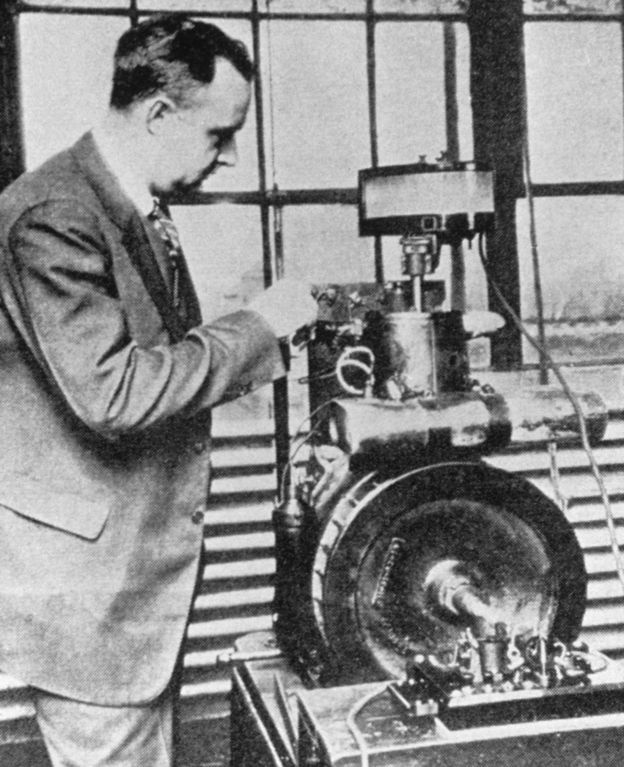
Better working practices could make tetraethyl lead safe to produce. But was it really sensible to add it to petrol, when the fumes would be belched out on to city streets?
About a century ago, when General Motors had first proposed adding lead to petrol - in order to improve performance - scientists were alarmed. They urged the government to investigate the public health implications.
Midgley breezily assured the surgeon general that "the average street will probably be so free from lead that it will be impossible to detect it or its absorption", although he conceded that "no actual experimental data has been taken".

Chemist Thomas Midgley with the Delco laboratory test engine
General Motors funded a government bureau to conduct some research, adding a clause saying it had to approve the findings.
Under pressure, the government organised a conference in Washington DC in May 1925. The debate there exemplified the two extremes of approach to any new idea that looks risky, but useful.
In one corner: Frank Howard, vice-president of the Ethyl Corporation - a joint venture between General Motors and Standard Oil. He called leaded petrol a "gift of God", arguing that "continued development of motor fuels is essential in our civilization".
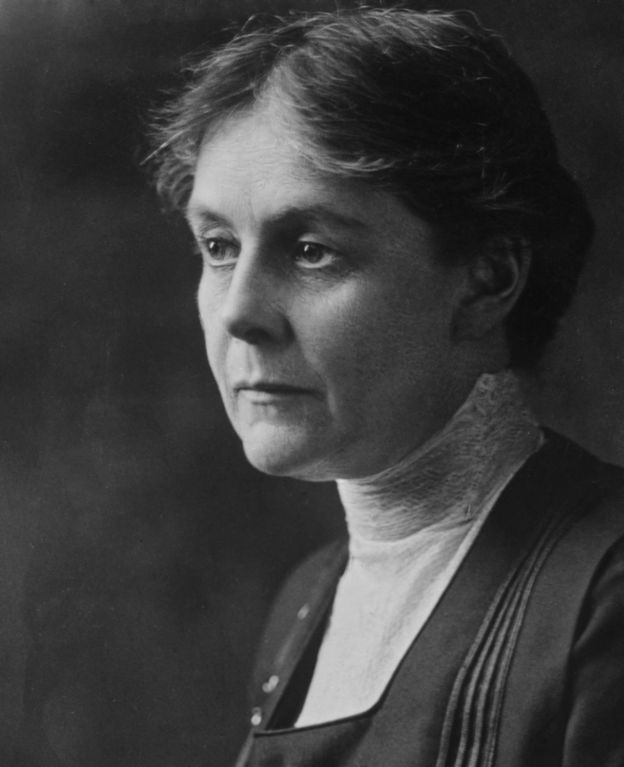
Dr Alice Hamilton argued the benefits of adding lead to petrol was outweighed by the risks In the other corner: Dr Alice Hamilton, the country's foremost authority on lead.
She argued leaded petrol was a chance not worth taking. "Where there is lead," she said, "some case of lead poisoning sooner or later develops, even under the strictest supervision."
Hamilton knew that lead had been poisoning people for thousands of years. In 1678, workers who made lead white - a pigment for paint - were described as suffering ailments including "dizziness in the head, with continuous great pain in the brows, blindness, stupidity".
The Romans used lead in water pipes. Lead miners often ended up mad or dead - and some correctly intuited that low-level, long-term exposure was also unwise.
"Water conducted through earthen pipes is more wholesome than that through lead," wrote the civil engineer Vitruvius, 2,000 years ago. "This may be verified by observing the workers in lead, who are of a pallid colour."
There's some evidence that as countries get richer, they tend initially to get dirtier and later clean up.
Economists call this the "environmental Kuznets curve", and it makes intuitive sense. If you're poor, you prioritise material gains. As your income grows, you may choose to spend some of it on a nicer, safer environment.
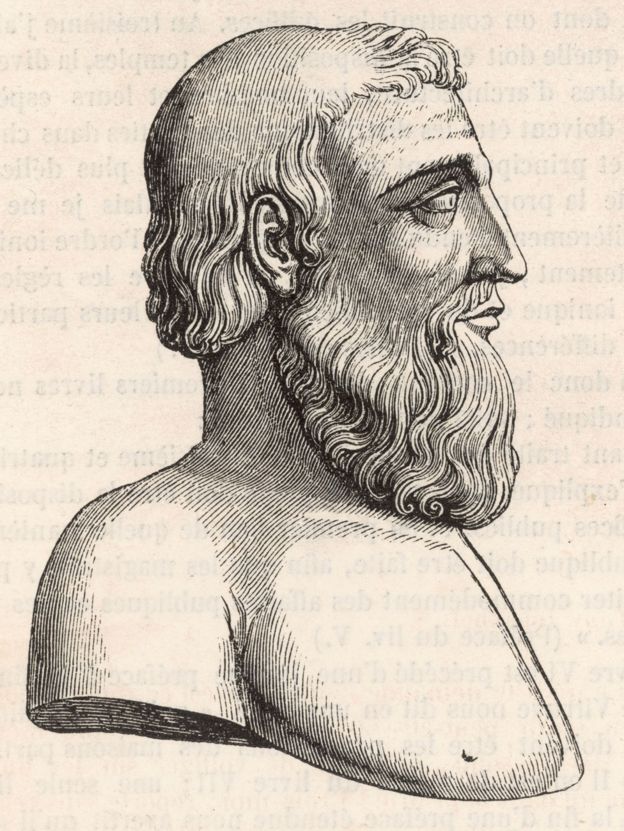
The Roman civil engineer Vitruvius warned against the dangers of lead 2,000 years ago
But was lead-free petrol really such an expensive luxury? True, the lead additive solved a problem: it enabled engines to use higher compression ratios, which made cars more powerful.
However, it was not the only way to solve the problem.
Ethyl alcohol had much the same effect and wouldn't mess with your head, unless you drank it. Midgley knew this, having combined petrol with practically every imaginable substance, from iodine to camphor to melted butter.
Why did the petrol companies push tetraethyl lead instead of ethyl alcohol? Researchers who have studied the decision remain puzzled. Cynics might point out that any old farmer could distil ethyl alcohol from grain. It couldn't be patented, or its distribution profitably controlled. Tetraethyl lead could.
Two decades later, in the 1990s, rates of violent crime started to go down. There are many reasons why this might have happened, but the economist Jessica Reyes had an intriguing thought.
Children's brains are especially susceptible to chronic lead poisoning. Is it possible that kids who didn't breathe leaded petrol fumes grew up to commit less violent crime?

Reyes could test her hypothesis: different US states phased out leaded petrol at different times.
By comparing the dates of clean air legislation with subsequent crime data, she concluded that more than half the drop - 56% - was because of cars switching to unleaded petrol.
Other researchers have found similar links between lead water pipes and urban homicide.
How did the US get this so wrong for so long?
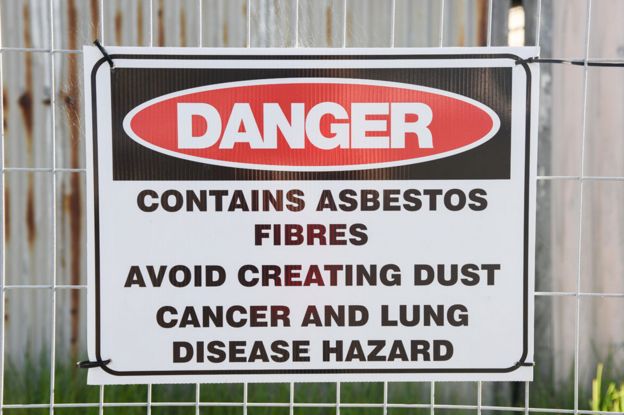
Risky, but useful?
The bureau's report was published amid the media frenzy over Oelgert's poisoned workmates. It gave tetraethyl lead a clean bill of health and was met with some scepticism.Under pressure, the government organised a conference in Washington DC in May 1925. The debate there exemplified the two extremes of approach to any new idea that looks risky, but useful.
In one corner: Frank Howard, vice-president of the Ethyl Corporation - a joint venture between General Motors and Standard Oil. He called leaded petrol a "gift of God", arguing that "continued development of motor fuels is essential in our civilization".

Dr Alice Hamilton argued the benefits of adding lead to petrol was outweighed by the risks In the other corner: Dr Alice Hamilton, the country's foremost authority on lead.
She argued leaded petrol was a chance not worth taking. "Where there is lead," she said, "some case of lead poisoning sooner or later develops, even under the strictest supervision."
Hamilton knew that lead had been poisoning people for thousands of years. In 1678, workers who made lead white - a pigment for paint - were described as suffering ailments including "dizziness in the head, with continuous great pain in the brows, blindness, stupidity".
The Romans used lead in water pipes. Lead miners often ended up mad or dead - and some correctly intuited that low-level, long-term exposure was also unwise.
"Water conducted through earthen pipes is more wholesome than that through lead," wrote the civil engineer Vitruvius, 2,000 years ago. "This may be verified by observing the workers in lead, who are of a pallid colour."
Pollution v progress
Many societies still grapple with the general question on which Howard and Hamilton disagreed: how much pollution is a price worth paying for progress?There's some evidence that as countries get richer, they tend initially to get dirtier and later clean up.
Economists call this the "environmental Kuznets curve", and it makes intuitive sense. If you're poor, you prioritise material gains. As your income grows, you may choose to spend some of it on a nicer, safer environment.

The Roman civil engineer Vitruvius warned against the dangers of lead 2,000 years ago
But was lead-free petrol really such an expensive luxury? True, the lead additive solved a problem: it enabled engines to use higher compression ratios, which made cars more powerful.
However, it was not the only way to solve the problem.
Ethyl alcohol had much the same effect and wouldn't mess with your head, unless you drank it. Midgley knew this, having combined petrol with practically every imaginable substance, from iodine to camphor to melted butter.
Why did the petrol companies push tetraethyl lead instead of ethyl alcohol? Researchers who have studied the decision remain puzzled. Cynics might point out that any old farmer could distil ethyl alcohol from grain. It couldn't be patented, or its distribution profitably controlled. Tetraethyl lead could.
The crime connection
The US didn't tax lead in petrol until the 1970s, then finally banned it as part of clean air legislation, as the country moved down the far side of the environmental Kuznets curve.Two decades later, in the 1990s, rates of violent crime started to go down. There are many reasons why this might have happened, but the economist Jessica Reyes had an intriguing thought.
Children's brains are especially susceptible to chronic lead poisoning. Is it possible that kids who didn't breathe leaded petrol fumes grew up to commit less violent crime?

Reyes could test her hypothesis: different US states phased out leaded petrol at different times.
By comparing the dates of clean air legislation with subsequent crime data, she concluded that more than half the drop - 56% - was because of cars switching to unleaded petrol.
Other researchers have found similar links between lead water pipes and urban homicide.
Disputed science and delayed regulation
You can put a dollar figure on the value of crime reduction, Reyes found. It's about 20 times higher than the cost of de-leading petrol - and that's before you count other downsides of children breathing lead, like worse performance in school.How did the US get this so wrong for so long?

Asbestos continued to be widely used in construction despite the emerging evidence of its dangers
It's a tale of disputed science and delayed
regulation, much like you could tell about asbestos, or tobacco, or
other products we now know slowly kill us.
The problem is that people who want to ban things aren't always disinterested visionaries like Hamilton. Sometimes they're obstructive cranks. The only way to tell the difference is by conducting studies.
And, as Gerald Markowitz and David Rosner point out, "For the next four decades, all studies of the use of tetraethyl lead were conducted by laboratories and scientists funded by the Ethyl Corporation and General Motors".
Battery bonanza: From frogs' legs to mobiles and electric cars
Why the falling cost of light matters
How a razor revolutionised the way we pay for stuff
And what of the scientist who first put lead in petrol?
By all accounts, Midgley was a genial man who may even have believed his own spin about the safety of a daily tetraethyl lead handwash.
But, as an inventor, his inspirations seem to have been cursed. His second major contribution to civilisation was the chlorofluorocarbon, or CFC, which improved refrigerators, but destroyed the ozone layer.
In middle age, afflicted by polio, Midgley applied his inventor's mind to lifting his weakened body out of bed. He devised an ingenious system of pulleys and strings. They tangled around his neck, and killed him.
Tim Harford writes the Financial Times's Undercover Economist column. 50 Things That Made the Modern Economy is broadcast on the BBC World Service. You can find more information about the programme's sources and listen online or subscribe to the programme podcast.
Originally published on http://www.bbc.com/news/business-40593353
The problem is that people who want to ban things aren't always disinterested visionaries like Hamilton. Sometimes they're obstructive cranks. The only way to tell the difference is by conducting studies.
And, as Gerald Markowitz and David Rosner point out, "For the next four decades, all studies of the use of tetraethyl lead were conducted by laboratories and scientists funded by the Ethyl Corporation and General Motors".
More from Tim Harford:
How Diesel's engine changed the worldBattery bonanza: From frogs' legs to mobiles and electric cars
Why the falling cost of light matters
How a razor revolutionised the way we pay for stuff
And what of the scientist who first put lead in petrol?
By all accounts, Midgley was a genial man who may even have believed his own spin about the safety of a daily tetraethyl lead handwash.
But, as an inventor, his inspirations seem to have been cursed. His second major contribution to civilisation was the chlorofluorocarbon, or CFC, which improved refrigerators, but destroyed the ozone layer.
In middle age, afflicted by polio, Midgley applied his inventor's mind to lifting his weakened body out of bed. He devised an ingenious system of pulleys and strings. They tangled around his neck, and killed him.
Tim Harford writes the Financial Times's Undercover Economist column. 50 Things That Made the Modern Economy is broadcast on the BBC World Service. You can find more information about the programme's sources and listen online or subscribe to the programme podcast.
Originally published on http://www.bbc.com/news/business-40593353

No comments:
Post a Comment
Note: Only a member of this blog may post a comment.